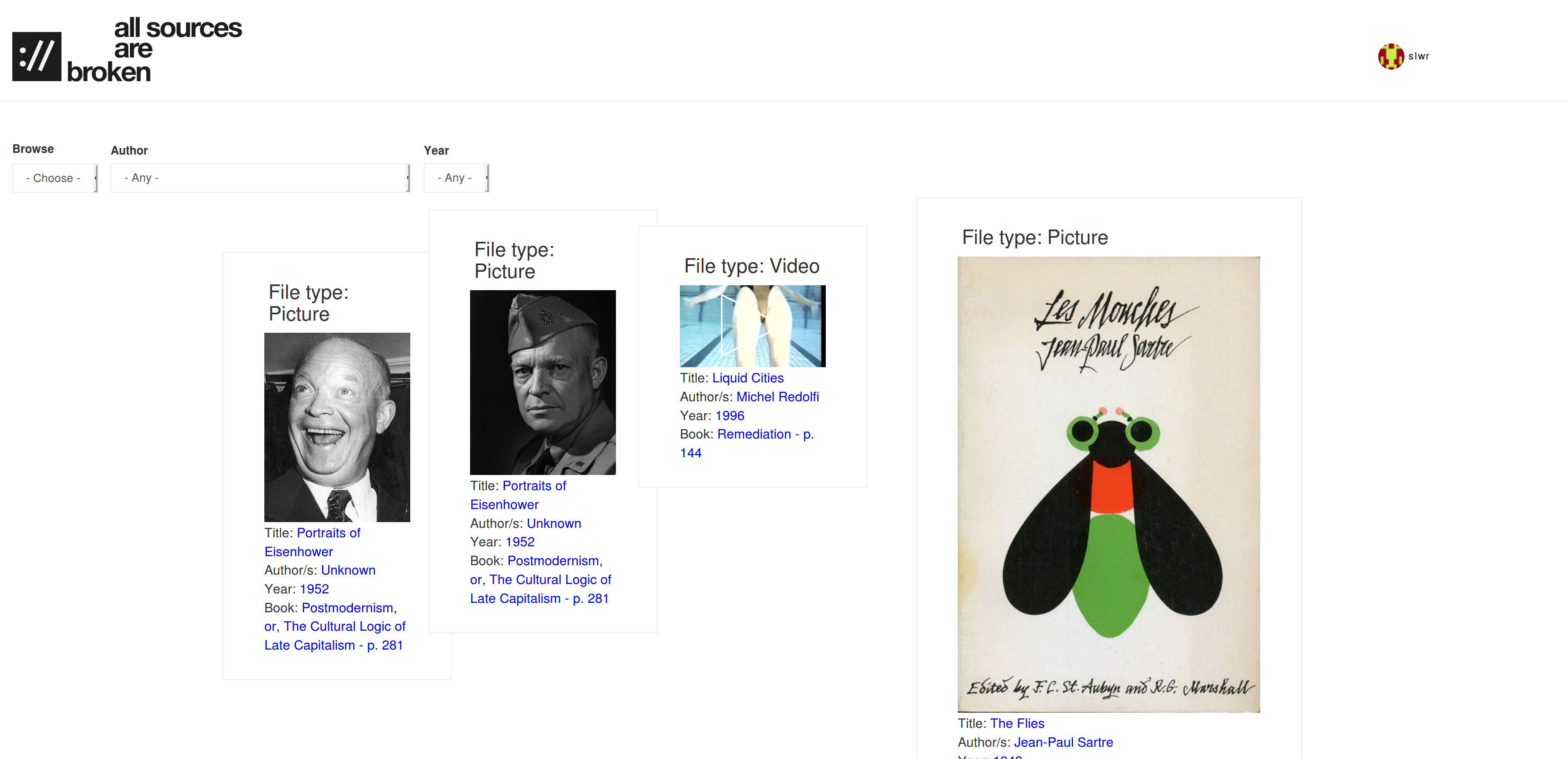
On the final day of the Urgent Publishing conference, Labor Neunzehn run the workshop “All Sources Are Broken”. Founded by Valentina Besegher and Alessandro Massobrio, Labor Neunzehn is an artist-run space located in Berlin and multidisciplinarily engaged in expanded cinema, modern music, publishing, and the critical reflection in media art.
Alessandro and Valentina introduced the workshop by highlighting the relationship between post-structuralism and post-digital. They also gave an overview of their practice which includes workshops, such as one about Web Archiving, run in collaboration with Rhizome and focusing on the Web Recorder tool. They presented also the Kamera series, a curatorial program devoted to the moving image in which each day there is a heavy rotation of the same film, thematically introduced by a dedicated publication. Labor Neunzehn is also involved in the curation of art exhibitions, such as “From Field Recording to Data Sonification in Late Capitalism”, which explores ways of presenting sound art.
All Sources Are Broken is the name of the platform developed by Labor Neunzehn. ASAB allows users to create cross-references between so-called old and new media. Users are asked to select short passages of a book mentioning media items such as movies, documents, websites and pictures, but also public figures and places. In this way the original book is “exploded”. The tool fosters the exploration of new strategies of learning and reading. ASAB is not meant to be understood as a full-fledged “product” or “service”, but more as an experimental instrument to rethink publishing. This is why the tool doesn’t incorporate automatized shortcuts such as looking for the excerpt in a database or giving a list of preselected choices: ASAB encourages slow reading.
To introduce ASAB, Alessandro and Valentina showed us Starfire, a 1993 commercial from Sun Microsystems. The futuristic commercial is particularly relevant because is mentioned in Remediation, a book by Jay David Bolter and Richard Grusin, one of the books we were asked to work with. The other two were Postmodernism, or, the Cultural Logic of Late Capitalism by Frederic Jameson and Media and Participation by Nico Carpentier.
These books were chosen to demonstrate that hypertextuality precedes the advent of the internet and can be found in print as well. ASAB tries to go beyond the dichotomy betweent paper and pixel and reminds us that reading is itself an act of writing. The tool comes from the realization that it is common to include hyperlinks in printed books but these hyperlinks are often broken. ASAB comes in help by connecting pieces of text in the book to media item online, which are defined OMS (online media sources).

All Sources Are Broken interface
Alessandro and Valentina are currently developing a new functionality for ASAB consisting in turning the surface of the website into a canvas. The user will be able to organize resources to create narratives and print a pdf out of it.
The project can be seen as a form or re-archiving that relates to techniques of preservation such as DOI (Digital Object identifier) or crawlers. ASAB is participatory: multiple users can contribute to enrich the archive. It’s interface tries to go against the general “shopping mall” feel of contemporary web.
After the participants tested ASAB, there was a discussion on new functionalities to implement and on the possible direction the project might take. While some of them enjoyed the experimental approach of the tool, some saw the potential of turning it into a service or into a software that can be locally installed.


